|
|
Review of GSM handset Pantech PG-8000
Package:
- Handset;
- Battery;
- RS-MMC 64mb memory card;
- Wired headset;
- Charger.
The model PG-8000 was presented by Pantech during “SvyazExpoComm
2005”, in August there was official announcement, the model was
scheduled to hit the shelves in September. As time went on, PG-8000
was nowhere to be seen, and a lot of people started forgetting what
this model was all about, phone’s specifications were no longer
astonishing, as they were before. Finally, in 2006 Pantech announced
that the model will be released in February or March. What was the
cause of delay? Everything is pretty simple. The phone has QVGA
display, meanwhile the platform comes from previous PG series handsets
(PG3500, PG3600, PG6100). The processor is not dealing well enough
with information processing. The first samples had very slow menu,
it was almost impossible to use the phone at all. The company decided
that installing new processor for this model is not such a good
idea, so they decided to optimize the software part of the phone
before releasing it. This was the actual reason for these delays.

The model is presented in candybar form-factor, with one notice:
it is used in horizontal mode, instead of the oh-so-used-to vertical.
While you are speaking, it gets more common since the position still
remains vertical, speaker and microphone are located in common positions.
But when you are going to enter the menu, you will have to put the
phone into horizontal position.
The phone’s dimensions are rather small (99.8x51.8x16.1 mm), the
weight is slightly heavier than 100 grams (106.5 grams). The phone
fits nicely into one’s hand, it is convenient to work with, partly
due to slightly bigger portion of weight located on the phone’s
lower side (in case it’s used in vertical position). It will fit
pockets of your jeans nicely. The design is pleasant, those who
had seen the phone live liked the outlooks. The phone’s edges are
slightly rounded. The model will be sold in two color solutions:
black with silver and completely silver. The first edition looks
more interesting than the second one, upper panel is made of black
varnished plastic, and the lower part is silver. Despite the fact
that the upper panel is varnished and easily soiled, the fingerprints
are not that obvious. The case is made of qualitative plastic, all
details are nicely matched to each other, there’s no backlash at
all.
Video
that demonstrates the phone’s outlook (8.42 Mb)>>>

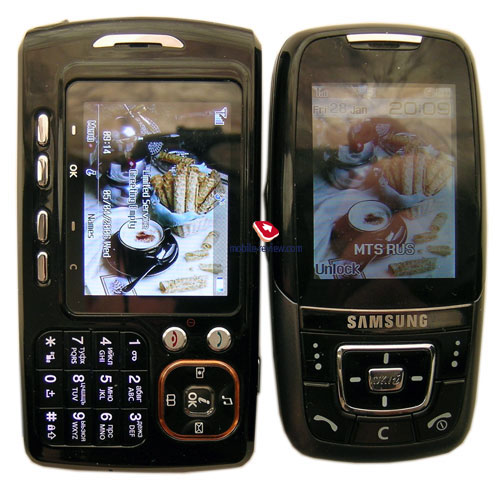
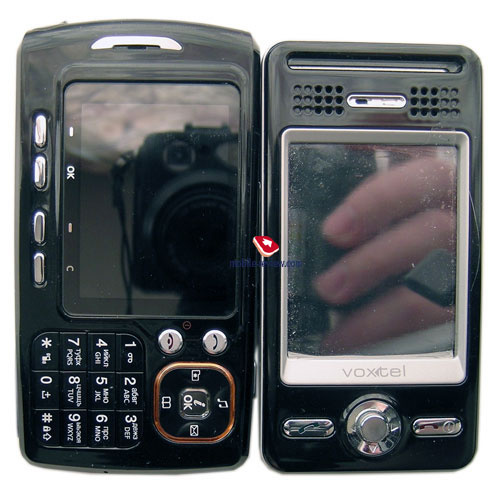
Button for activating the camera is located on the right side.
Window of fully-functional IrDA port is located on the left side,
as well as joined volume control and Hold (blocking of all buttons),
and the final detail is slot for RS-MMC memory cards which is covered
by plastic cork, fixed to the case. The fixation of slot cover is
rather tight, and most problems will be encountered when you are
trying to close the slot. The most important aspect – try to do
it as much accurate as possible, in that case you will avoid breaking
it. I would also like to point your attention to buttons located
on the sides, they are sticking out of the case pretty much, which
allows working with them by touch. The buttons are very tight, this
excludes faulty key-presses.

2.5mm jack is located on the top, it is used for connecting the
headset, it is also covered with plastic cork which is fixed to
the case. The interface connector is located on the bottom, surprise-surprise,
it is covered with plastic cork that is fixed to the case as well,
hole for the strap is located on the corner.

Quite big TFT-display with QVGA resolution (320x240 pixels; 40x29.5
mm), which is capable of showing up to 262000 colors is located
on the front panel. This is the first phone by Pantech that supports
QVGA. The display’s quality is good; when compared to D600 we can
see that it’s not as bright as Samsung, but it is certainly sharper.
The screen turns pale when it encounters sunlight, but the information
remains readable.


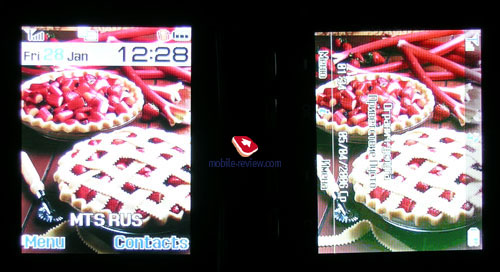
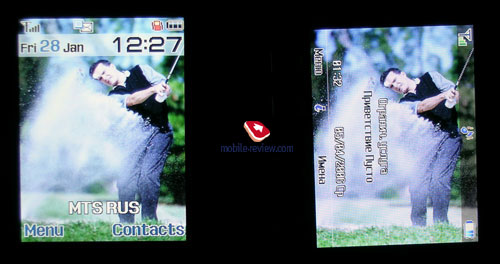
As we already mentioned, you will have to work with the phone in
horizontal mode, that’s why the display itself, and the information
shown on it is placed horizontally. This solution allows browsing
messages and web-sites through Opera mini with great deal of comfort.
More information can fit the screen, and it’s nicely readable.

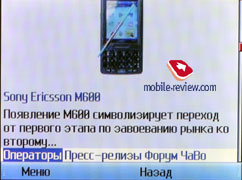
The buttons are made of plastic, the layout is made the way so
you could work with the phone horizontally. On the right side nearby
the display you can see two small round keys (call/end call), four-positional
horizontal key is located nearby, the button OK is placed inside
it. The size of navigation key is satisfying, so are the call and
end call buttons, despite their tiny size. One of the reasons for
that is because every button is in the right place.

Video
clip showing how you operate the with keyboard (2.43 Mb)>>>
Four instead of two soft-keys are located under the display. The
first and the third are used for accessing the menu, meanwhile the
second is used for confirming the action, and the fourth, on the
contrary, is used for canceling the action. At first it feels rather
unusual, but it takes very little time to get used to this unusual
layout.

The keypad is formed in terrace style, buttons are close to each
other. Their size isn’t big, that’s why people who have large fingers
will find it hard to operate with the keyboard. Another thing should
be noted as well: dialing the number or writing a message can be
done only with right hand, and some users might find this being
problematic too. The backlight color is lilac, it is equally spread
among the surface.
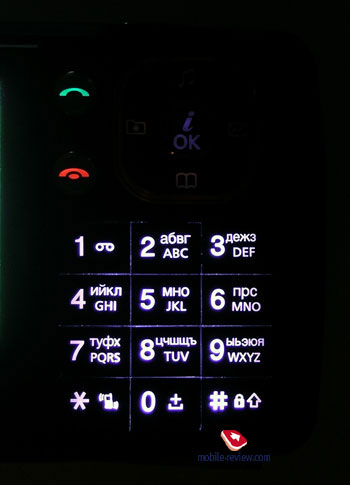
The speaker which is used for playing the ring tone is located
on the back cover. Slightly above that you can see 2mpx camera,
and a small mirror nearby for making self-shots together with LED.
The flash is very bright and can be used instead of flashlight,
you just have to press and hold the UP button in order to activate
it. Camera’s lens is not protected by anything, it is not even drowned
into the case, that’s why scratched may appear on that, so be careful.

The remaining part of back side is occupied by Li-Ion battery with
950 mAh capacity. The battery’s fixation is reliable, there’s no
backlash and I don’t believe that it will appear any time after.
According to manufacturer, the phone can work up to 200 hours in
stand by mode and up to 3.5 hours while talking. We were testing
this unit in Moscow, and it worked for ~ 3 days with 30 minutes
of phone calls daily, and up to 2 hours of listening to radio, 30
minutes spent for other functions. This is a pretty good result,
since not every phone especially with QVGA can last that long. It
takes around 3 hours for the phone to charge-up completely.

Menu
As we said, the phone is using the same platform as previous models
of PG series. The software changes are mostly related to optimizing
the menu for bigger resolution and horizontal layout, as well as
with slightly redesigned navigation style. The main menu is presented
as 3x3 matrix. Unlike previous phones, the icons are no longer big,
they are located on the right side of the screen, meanwhile the
big thumbnail of highlighted menu item is shown on the left side.
The sub-menu is presented in the style of vertical lists, there’s
fast number navigation on board.

Despite the fact that it took almost a year for the company to
improve software part of the phone, the work with one cannot be
described as ideal. Sometimes you can see visible freezing, while
browsing the phone’s menu, sometimes the phone gets frozen for quite
a while performing relatively easy operation. For example, if charge-up
your phone, and you want to activate the alarm clock, it will take
more than a minute for the operation to be completed.
The phone’s localization is made nicely, there are no acronyms
or shortenings. Predictive T9 text input supports both English and
Russian.
Internal memory is 19.7mb, it is spread dynamically between applications.
You can enlarge the capacity with the help of RS-MMC memory card.
Phone book. The phone can store up to 800 numbers.
Entries from phone’s memory and the SIM-card can be displayed separately
or together. You can add up to 4 phone numbers for one entry, as
well as e-mail address, custom ring tone, add a photo or a video
clip, that will be displayed when the person is calling you. The
name can be assigned to one of 10 groups. The user can create custom
groups or choose one of the 4 preinstalled. Each group can have
custom title (up to 19 symbols) and ring tone.

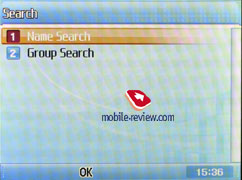
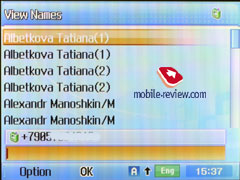
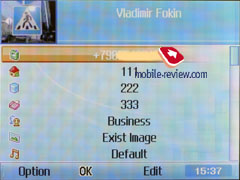
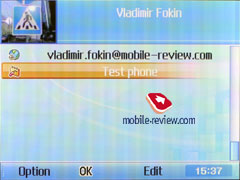
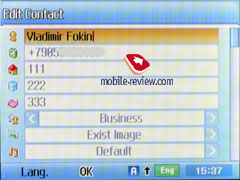
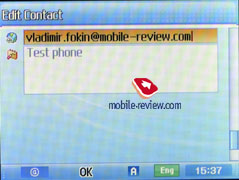
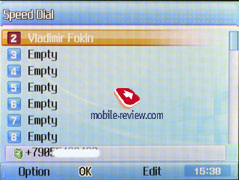


The phone supports quick dialing (up to 8 numbers). The phone book
can be searched by name (by letters) or by groups.
Messages. Up to 100 messages can be stored in
the phone’s memory. Handset supports EMS standard, this leads to
ability to add small pictures, animations and short ring tones into
the message’s body. You can create custom templates. Mass-message
sending (up to 5 contacts) is supported as well.
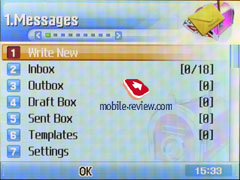
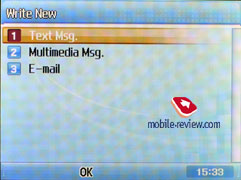
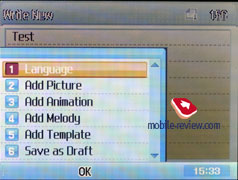
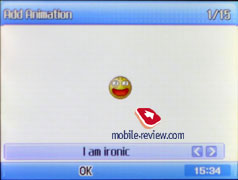
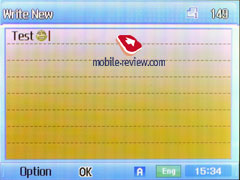
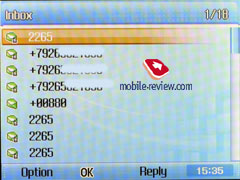
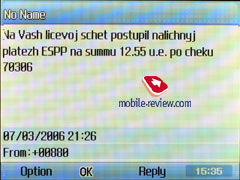
For the first time in Pantech’s history, Text to Speech function
was introduced (pronouncing text information). Although its realization
so far is a little disappointing. The function can be either enabled
or displayed, this operation can be done from the Message Settings
menu. It would have been more interesting if you could activate
it for each message separately, for each message, cause I don’t
think that you will need this function while you’re in public, perhaps
only for public’s amusement. Ideal solution in my opinion would
be activating the function when the headset is connected, and the
message would be pronounced automatically or, for example, after
long key-press of headset’s button. I mean it would be very handy
to find out what message you received without pulling the phone
out of your pocket.
Video
example of Text To Speech function in action (3.24 Mb)>>>
Another problem with this function is that only messages typed
without mistakes will be read correctly. In case if the message
has shortenings, acronyms, or the words written with mistakes, the
message will be read as sputter, which will be hard to understand.
This means that at this stage of evolution, reading messages looks
like entertaining function and that’s it.
MMS editor is simple and easy to work with. You can create several
slides, the maximum size of outgoing message cannot exceed 100kb.
Up to 30 MMS messages can be stored in the phone’s memory.

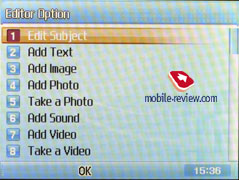

An integrated POP3/IMAP/SMTP mail client supports several accounts
and has an attachment constraint of 300 KB. At that any file can
act as an attachment, even the one from the MMC-card memory. Reading
Russian codings may be hard, since the device understands only Unicode.
Just like in case with MMS messages, only 30 mails can be stored
in the phone’s memory, despite their size.
Call lists. Up to 20 entries in each list, everything
is rather customary. There is a combines list of 30 numbers. Equal
numbers are not summed up, but are shown one after another. If you
keep a corresponding image for a caller, then an icon is shown in
the list. You can see information about a call duration, call counters
and GPRS-traffic.
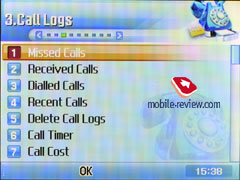
Media Gallery. Simple file-manager, here you can
see the contents of your phone, they are sorted by type. You can
see data of the external memory card. The files can be transferred
via Bluetooth or IrDA to other devices, as for photos and pictures,
they can be transferred via MMS messages, as well as sent to printer
directly.
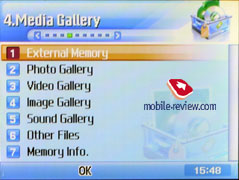
Organizer. Alarm Clock. You can set up to 5 alarm
clocks, each of them can be activated single time, or daily, from
Monday to Friday, or from Monday to Saturday, or by selected days
of the week. Each Alarm Clock can have its own ring tone.

Calendar. You can only use Monthly view or all events all together.
For every event you can select the type (birthday, meeting, trip,
etc), time, make a small text note, select the alarm tone, time
when alarm goes off (in time, or in interval from 15 minutes to
1 day prior to the event). You can also setup single time or monthly,
annual reoccurrence of the event. There can be up to 50 entries
made in total. Voice memo with up to 3 minutes length can be attached
to any of them.
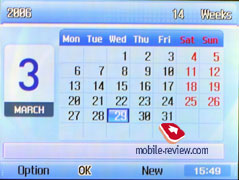
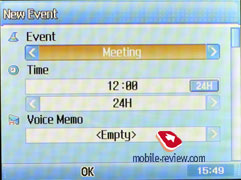

Notes are either text (up to 255 characters) or voice (up to 3
minutes).
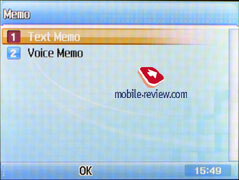

World time, calculator, unit converter, stopwatch with 4 intermediate
values, countdown timer are also gathered here.
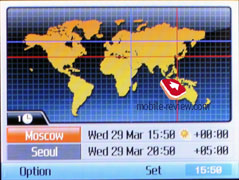
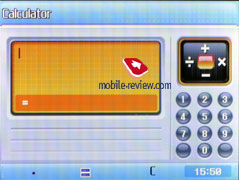
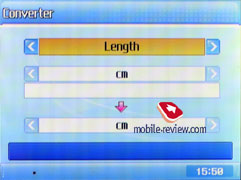

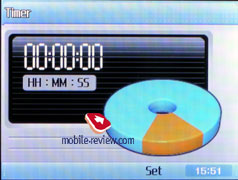
Settings. Everything related to handset and network
settings, display and sound is located here. You can select one
of preinstalled photos or animations as wallpaper, as well as install
any other picture that you had downloaded or taken with the camera.
You can choose one of the styles for displaying the clock and calendar.
Backlight timer can be setup as well: from 5 seconds to 10 minutes
range. Brightness can be adjusted too.
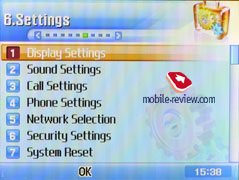
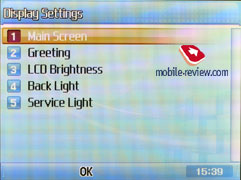
The phone has 5 profiles, that are fully customized by user, any
ring tone can be selected (including mp3 file), the size is not
limited. As ring type you can select one of the following options:
ring tone only, only vibra, vibrating alert followed by ring tone,
or ascending tone.
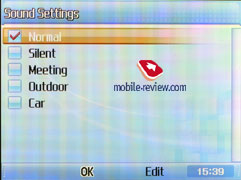
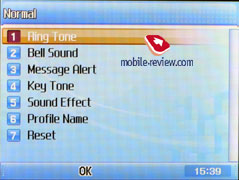
“Bookmarks” menu allows user to select six most accessed functions
of the phone. The menu can be activated by pressing left on the
navigation key in stand by mode.
The last option is answering machine. The user can choose one of
the three greetings or record them manually (he length cannot exceed
15 seconds). Here you can also choose the time, after which the
answering machine will be activated (in the range from 3 to 20 seconds).
This menu can be quickly accessed by holding down the volume button
in the stand by mode.

Connections. WAP-browser v2.0 is located here.
Besides you can enable “USB Mass Storage” option for connecting
to PC with the help of data cable, this way when connected to PC
you will see contents of internal and external memory without installing
additional drivers. IrDA is activated here as well, it can operate
in three modes Internet Connection, PC Sync Connection and Object
Exchanging.

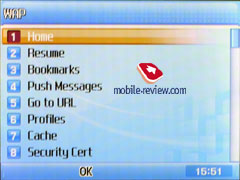
Bluetooth version 1.2 is integrated, the following profiles are
supported GAP, SDAP, Serial-Device A, Serial-Device B, OBEX, Headset-AG,
Dun-GW, OPP-Client, OPP-Server, FT-Server, FT-Client, Handsfree-AG,
BIP-Image Push. It rouses no cavils, everything is quite plain.
A pleasant thing is you can set the type of memory where to store
the files received via Bluetooth by default.

Multimedia. MP3-player allows playing songs with
various bitrates, but they can stored only in custom folder on the
memory card. The songs that are located on the phone’s internal
memory are not displayed, which is pretty much logical, since the
internal memory size is extremely low. Search is not available,
you should note that when copying the information. Playlists allow
the user to group songs the way he likes. There are preinstalled
equalizers for different genres, you can also select skins for the
player. Player’s quality is average, it does not have FF option,
only switch to next song. Player cannot work as minimized application,
though it is possible to use it even if the headset is not connected.
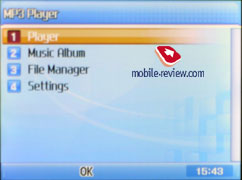

Stereo headset can be found in the package, it has Answer Call
button and volume control jog. The headphones are average
Radio. Radio can be activated only when you connect the headset,
since the wire acts as antenna. Once the headset is connected, you
can select weather the sound be transferred to headphones or the
speaker. Up to 10 stations can be stored in the phone’s memory,
each of them can have its custom name. The reception quality is
okay, the disappointing thing is same as in case with the player,
it cannot work minimized.
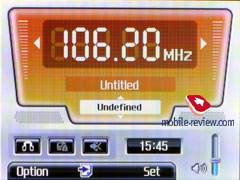
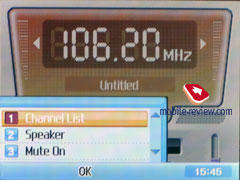

Java. The phone supports MIDP 2.0. There are two preinstalled games
- Run (arcade) and AquaPangPang (arcade). Even preinstalled games
that are supposed to be optimized for the headset are unplayable
because of the speed, the game reminds more of a slide-show. Additional
Java-applications can be installed only via WAP.
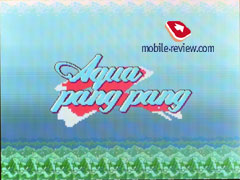
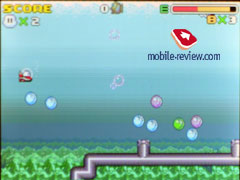
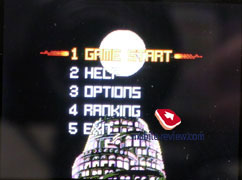

Camera. At first the company planned to install
2mpx CCD module, but in the end they decided to drop this idea and
setup 2mpx CMOS module w/o autofocus. On the whole camera is similar
to the one installed in Pantech PG6100, the algorithm was slightly
improved, thanks to which the shots turn out slightly better. The
following resolutions are supported – UXGA (1600x1200), SXGA (1280õ1024),
XGA (1024x768), VGA (640õ480), QVGA (320õ240). You can setup the
shots quality - Fine, Normal, Low. A series of shorts (from 4 to
15) with certain intervals can be made, you can choose the speed
for that (slow, average, fast). White balance settings are as follows:
daylight, daylight lamp, cloudy, incandescent lamp.
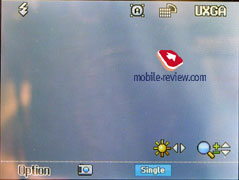
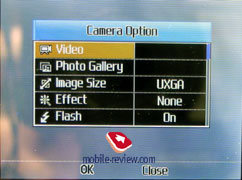
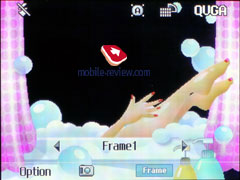
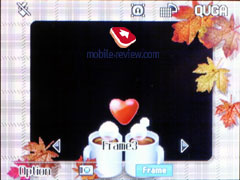
The flash can be either enabled or disabled. Nothing special can
be said about that, it’s more of a bright flashlight, since it doesn't
help much when making shots in darkness. The photos can be stored
default folder, or in custom one. It takes around 15-20 seconds
to save high-res photo. This is too much.
Mosaic style of shots can be made as well – from 2 to 9 shots.
In this case photos are displayed as one shot. You can apply frames
(10 preinstalled) and effects (warm, sepia, antique, clear, moonshine,
negative, b&w, emboss). There’s 4x digital zoom, but it’s better
not to use it.
The quality of shots is okay, especially if the lighting conditions
are good. The worse lighting during the shots is, the worse the
quality will be. Great portion of noise will appear if shot is taken
during night. On the whole the shots quality is higher than Pantech
PG6100, and it is around the level of Samsung D600.
Pantech PG-8000
|
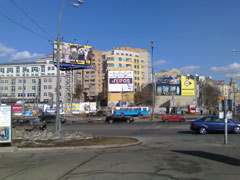 |
 |
(+)
maximize, 1600x1200, JPEG |
(+)
maximize, 1600x1200, JPEG |
 |
 |
(+)
maximize, 1600x1200, JPEG |
(+)
maximize, 1600x1200, JPEG |
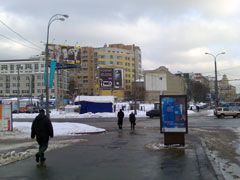 |
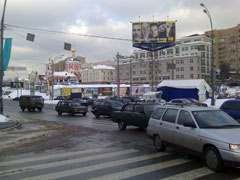 |
(+)
maximize, 1600x1200, JPEG |
(+)
maximize, 1600x1200, JPEG |
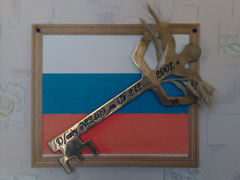 |
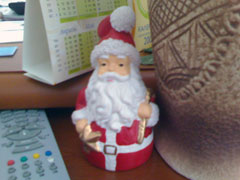 |
(+)
maximize, 1600x1200, JPEG |
(+)
maximize, 1600x1200, JPEG |
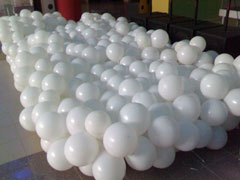 |
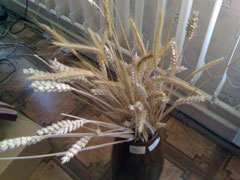 |
(+)
maximize, 1600x1200, JPEG |
(+)
maximize, 1600x1200, JPEG |
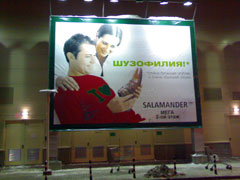 |
 |
(+)
maximize, 1600x1200, JPEG |
(+)
maximize, 1600x1200, JPEG |
The phone can record video in MPEG4 format (three resolutions are
supported - SQCIF, QCIF and QVGA). You can also select four types
of video – for MMS, low, average, high. When shooting video with
SQCIF and QCIF resolution you can select frame rate (15 or 30),
as for QVGA – only 15. The clip quality is below average, it turns
out not smooth, you can see freezing in some places. The positive
aspect that the clips are stored in MPEG4 format, since in previous
models MJPEG codec was used instead, which made it impossible to
use the clips outside the phone.
Video
sample 1 (187 Kb)
Video
sample 2 (141 Kb)
Video
sample 3 (192 Kb)
Unlike previous models, this time the settings that you had entered
will be saved for future times, and default settings can be rested
from the camera settings menu.
The phones in album can be viewed as list, as thumbnails (up to
6 photos displayed at once), or one by one, this way each photo
will be shown in full-screen. You can edit the photos (including
ability to cut part of the image and slightly improve it).
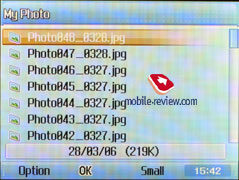


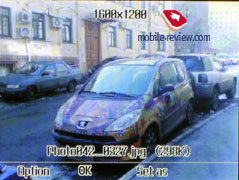
The clips in the video player can be played in window or in fullscreen
mode, just press “*” key during playback.
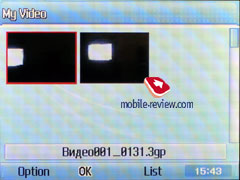

Impressions
Network reception quality is higher than average, handset provides
good coverage in places where other phones are not good at that.
Quality of 64-tone polyphonic ring tones is good, there’s a separate
speaker, which provides good playback quality and high volume. You
can use mp3 files as ring tone, there are no limitations in size
or bitrate. Vibrating alert power is average, sometimes you may
miss a call because you won’t feel it.
This handset has loudspeaker function, it is activated via menu
during phone call. Realization is good, there are no concerns about
that one.
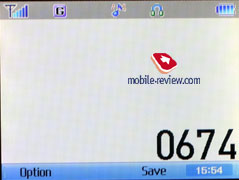

This phone will be interesting due to its design in the first place,
it just gathers everyone’s attention. Horizontal-style navigation
is not a unique one, you could see that earlier (take Nokia N-Gage
as example). You will have to get used to operating it, and people
with large fingers will find keypad being uncomfortable to work
with. And some users may find it completely unusable because keypad
can be operated only with right hand. The display installed in this
unit is good, high resolution and horizontally orientated picture
display make the work comfortable and pleasant. Improved camera
algorithm allows getting good shots, although only in case the lighting
conditions are good.
There’s one question remaining: for whom this handset was made?
It will not suit young people, because mp3 player lacks functions,
and you cannot listen to it or radio in minimized mode; Java applications
will be really slow. Grown-ups may be aware of the design, and some
may not find horizontal navigation being that much useful. We can
only suppose that it will be in demand for young people who will
like the design, and use the phone mostly for calls and text messages,
as well as built-in camera and radio, meanwhile other functions
do not bother them that much. It can also be said that this model
is a failure, and was released only in order to demonstrate that
Pantech has handset with QVGA-display and 2mpx camera in its line-up.
An integrated 3D hardware accelerator would have done the trick,
but it seems that the company has neither will or ability to improve
software part of PG8000.
The model is already for sale, its price is around 450 USD. This
handset has enough competitors, although if you compare between
those who have QVGA display and 2mpx camera, it will be hard to
find any (design, horizontal orientation).
Vladimir Fokin ([email protected])
Translated by Alexander "Lexx" Zavoloka
([email protected])
Published — 25 April 2006
Have something to add?! Write us... [email protected]
|
News:
[ 31-07 16:21 ]Sir Jony Ive: Apple Isn't In It For The Money
[ 31-07 13:34 ]Video: Nokia Designer Interviews
[ 31-07 13:10 ]RIM To Layoff 3,000 More Employees
[ 30-07 20:59 ]Video: iPhone 5 Housing Shown Off
[ 30-07 19:12 ]Android Fortunes Decline In U.S.
[ 25-07 16:18 ]Why Apple Is Suing Samsung?
[ 25-07 15:53 ]A Few Choice Quotes About Apple ... By Samsung
[ 23-07 20:25 ]Russian iOS Hacker Calls It A Day
[ 23-07 17:40 ]Video: It's Still Not Out, But Galaxy Note 10.1 Gets An Ad
[ 19-07 19:10 ]Another Loss For Nokia: $1 Billion Down In Q2
[ 19-07 17:22 ]British Judge Orders Apple To Run Ads Saying Samsung Did Not Copy Them
[ 19-07 16:57 ]iPhone 5 To Feature Nano-SIM Cards
[ 18-07 14:20 ]What The iPad Could Have Looked Like ...
[ 18-07 13:25 ]App Store Hack Is Still Going Strong Despite Apple's Best Efforts
[ 13-07 12:34 ]Infographic: The (Hypothetical) Sale Of RIM
[ 13-07 11:10 ]Video: iPhone Hacker Makes In-App Purchases Free
[ 12-07 19:50 ]iPhone 5 Images Leak Again
[ 12-07 17:51 ]Android Takes 50%+ Of U.S. And Europe
[ 11-07 16:02 ]Apple Involved In 60% Of Patent Suits
[ 11-07 13:14 ]Video: Kindle Fire Gets A Jelly Bean
Subscribe
|



























































































